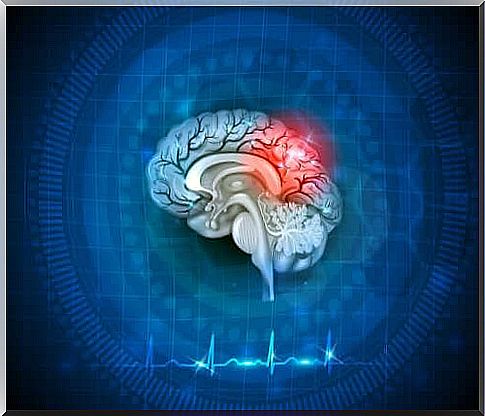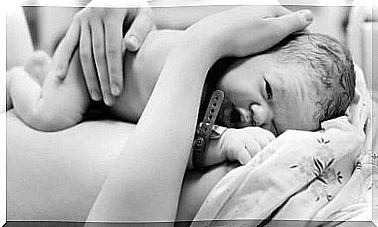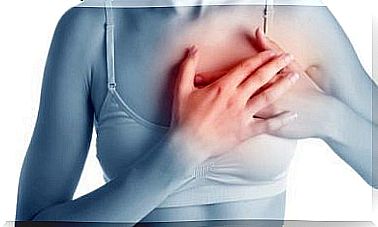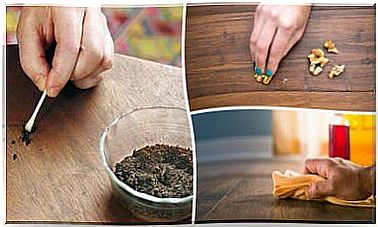First Aid For A Stroke
In the event of a stroke, you must always call the emergency doctor first, because every minute counts in order to save the life of the person affected. Then you can give first aid. Find out today what to do in this case.

A stroke or apoplexy is the result of a sudden circulatory disorder in the brain, which leads to a lack of oxygen and nutrients and which leads to the death of brain tissue after a few minutes. At a stroke, so immediate medical attention is required, because it is a serious medical emergency.
The faster the patient is treated, the higher the likelihood of minimizing consequential damage.
First aid for a stroke: FAST test

In the event of a possible stroke , the FAST test is very helpful in confirming the suspicion:
- Face: Ask the person to smile. If one corner of the mouth droops, this indicates a hemiplegic paralysis.
- Arms: If the affected person tries to stretch both arms forward and turn the palms up, one arm will drop or rotate if they are paralyzed.
- Speech: Can the person repeat a simple sentence? Is she stuttering or having trouble speaking?
- Time: When you have a stroke, every minute counts. Call the emergency doctor immediately!
In addition to these symptoms, there are other characteristic signs that indicate a stroke that occurs suddenly. This includes:
- Weakness or numbness on one side of the body
- Blurred vision or loss of vision, especially in one eye
- Severe headache for no apparent reason
- Dizziness, instability, or loss of consciousness
First aid for a stroke
If the affected person is passed out and does not react when you touch them or talk to them, lay them on their back and lift their chin up slightly with your hand. Check that the person is breathing by bringing your ear to their mouth. You can also hear and feel the breathing on your chest.
If the person is not breathing, you will need to attempt resuscitation.
Cardiopulmonary resuscitation

Cardiopulmonary resuscitation or resuscitation can save the life of a patient with cardiovascular arrest. It is best to take a first aid course in order to be prepared for such emergency situations. Everyone should know the most important cardiopulmonary resuscitation techniques. Because cardiovascular arrest can occur at any time and we can all be victims.
Cardiopulmonary resuscitation takes place in two phases, which are carried out alternately:
- Chest compressions to maintain blood circulation.
- Mouth-to-mouth resuscitation to provide oxygen to the patient.
Start with chest compressions to ensure that the organs are supplied with blood. You kneel on the floor next to the patient and place the ball of one hand on the center of the person’s chest. Put the other ball of your hand over it. Interlace your fingers and do 30 compressions, about two per second.
After the 30 compressions, switch to mouth-to-mouth resuscitation or mouth-to-nose resuscitation. Inhale normally, then blow steadily into the patient’s mouth or nose. After two breaths, watch to see if your chest fills to see if you’re doing it right.
Then continue with 30 compressions and alternate between these two methods until the emergency doctor is on site.
What shouldn’t you do if you have a stroke?
With the good intention of helping the victim, we often do things that only make the situation worse. You don’t have to try to alleviate any of these signs and symptoms, as doing so will only waste valuable time if it is a stroke. You are also not allowed to give the patient anything to eat or drink if a stroke is suspected.
Which preventive measures are useful?
As always, prevention is the best way to prevent such life-threatening situations. Different risk factors for a stroke are:
- high blood pressure
- Having suffered a stroke before
- Smoke
- Diabetes of any kind
- Heart disease
- Age
The best precautionary measures are therefore to keep these risk factors as low as possible and also to avoid other unhealthy habits. In addition to avoiding tobacco, you should also reduce your alcohol consumption and not self-medicate.
A healthy weight is also very important. Exercise for at least half an hour each day and eat a healthy and balanced diet. You should also check your blood pressure, blood sugar level, and cholesterol levels regularly.
Finally, we recommend an annual routine check-up. Older people should have a preventive check-up twice a year. The doctor may prescribe medication, which should then be taken as directed to prevent more serious consequences.









